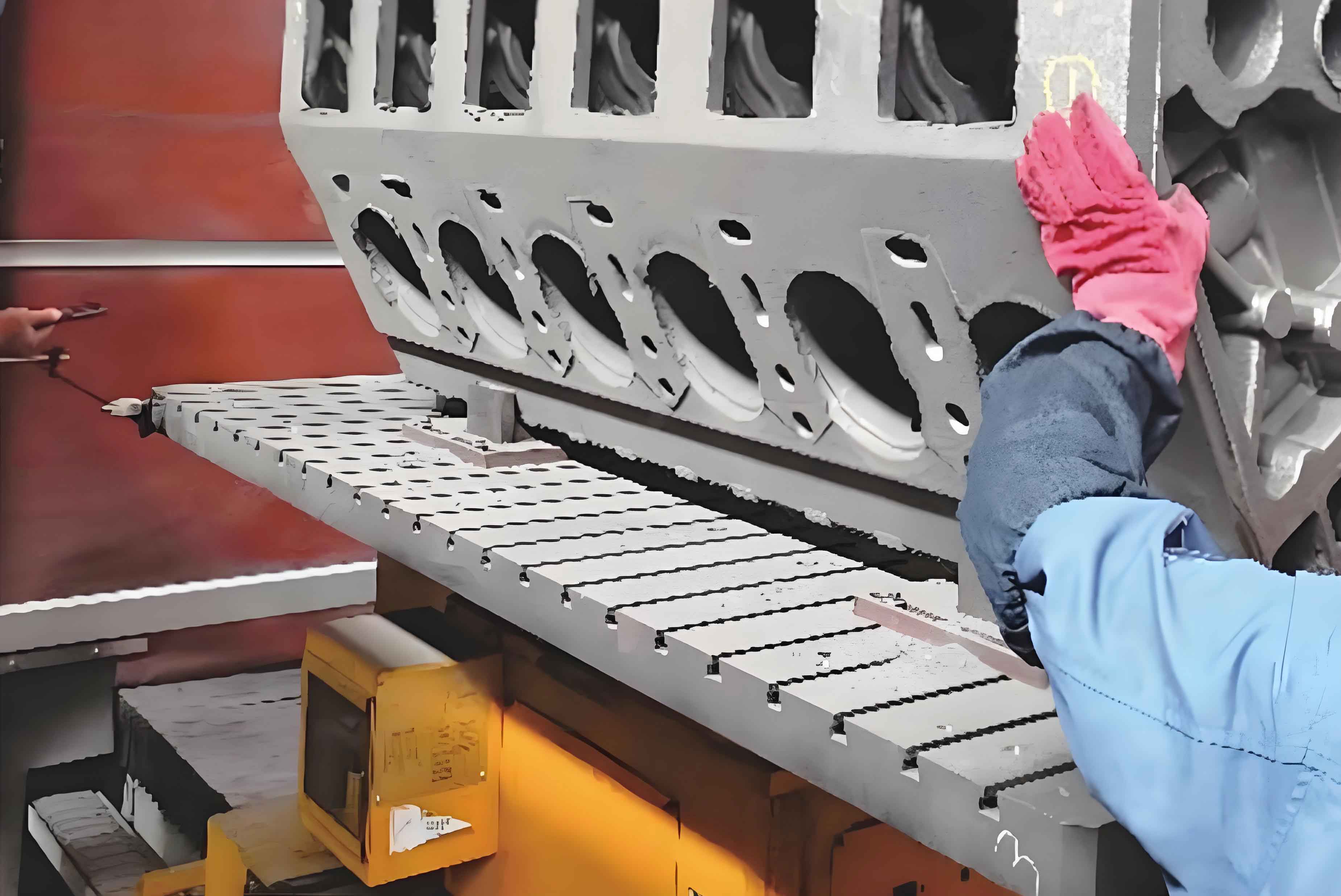Abstract
The engine cylinder block, a critical component of internal combustion engines, demands stringent machining precision to ensure optimal performance. Among its critical surfaces, the #399 cylinder head joint surface directly impacts combustion chamber sealing, compression ratio, power output, fuel efficiency, and engine durability. This study addresses persistent tool mark defects observed during the finishing milling of the #399 surface in a manufacturing line, which led to high scrap rates (0.78% monthly) and excessive tool replacement costs. Through systematic analysis of 10 potential factors—spanning machine parameters, tool geometry, and process design—three root causes were identified: excessive tool insert height variation, suboptimal machining paths, and inappropriate tool life settings. Mitigation strategies, including tool configuration optimization, path trajectory redesign, and adaptive tool life management, reduced tool mark recurrence from 15.25% to 5.88%. The findings underscore the interplay between tool dynamics, process stability, and surface quality in engine cylinder block manufacturing.

1. Introduction
The engine cylinder block serves as the structural backbone of an engine, housing critical components such as cylinders, pistons, and crankshafts. Its machining quality directly determines engine performance metrics, including power output, fuel efficiency, and longevity. The #399 cylinder head joint surface, in particular, requires exceptional flatness (≤0.02 mm), parallelism (≤0.03 mm), and surface roughness (Ra ≤1.6 µm) to prevent combustion gas leakage and premature wear.
In a high-volume production environment, recurring tool marks on the #399 surface were observed, leading to a 15.25% tool return rate and significant scrap losses. This study employs a structured problem-solving framework to isolate causative factors, validate hypotheses, and implement corrective measures.
2. Problem Characterization
2.1 Defect Manifestation
Tool marks on the #399 surface manifested as periodic ridges or grooves (Figure 1), detectable via tactile inspection and surface profilometry. These defects exceeded roughness thresholds (Ra >2.0 µm) and compromised gasket sealing integrity.
2.2 Economic Impact
- Scrap rate: 0.78–1.2% monthly (337 units/month).
- Tool replacement cost: $12,500/month due to premature tool wear.
- Downtime: 8–12 hours/month for tool reconfiguration.
3. Root Cause Analysis
A fishbone diagram (Figure 2) categorized potential causes into man, machine, material, method, and environment. Automated machining and controlled environments excluded human and environmental factors. Ten terminal causes were evaluated:
| Terminal Cause | Validation Method | Outcome |
|---|---|---|
| Insufficient spindle clamping force | Force measurement (40–60 kN) | No correlation with tool marks |
| Excessive ball screw vibration | Amplitude monitoring (<40 µm) | Within tolerance, no impact |
| Fixture misalignment | Height variation measurement | ≤0.02 mm, no improvement |
| Inadequate clamping force | Force adjustment trials | No correlation |
| Tool insert height variation | Height difference trials (1–5 µm) | Strong correlation (R²=0.92) |
| Suboptimal edge chamfer width | Chamfer width trials (12–18 µm) | No significant impact |
| Material hardness variation | Hardness testing (197–241 HBW) | Within specification |
| Inefficient machining path | Path trajectory comparison | 45% higher tool marks in reverse |
| Incorrect tool life settings | Life adjustment trials | 33% reduction in tool marks |
| Speed/feed rate mismatch | Parameter verification | Within tolerance |
3.1 Tool Insert Height Variation
Tool inserts with height discrepancies >5 µm caused uneven load distribution, inducing vibrations. The relationship between height difference (Δh) and tool mark occurrence (P) was modeled as:P(%)=18.3×\Deltah−4.7(R2=0.92)
Example: At Δh = 5 µm, P = 83.33% (Table 1).
Table 1: Tool Mark Rate vs. Insert Height Difference
| Δh (µm) | Tool Return Rate (%) |
|---|---|
| 1 | 0.00 |
| 3 | 16.67 |
| 5 | 83.33 |
3.2 Machining Path Inefficiency
The original circular entry/exit path (Figure 5) induced chatter due to abrupt directional changes. A bidirectional path (Figure 9) reduced tool marks by leveraging material spring-back:Fnormal=k⋅δ(Hooke’s Law)
where Fnormal = cutting force, k = material stiffness, δ = deflection.
3.3 Tool Life Mismanagement
Extending tool life beyond 600 cycles accelerated edge wear, increasing cutting forces. The Taylor tool life equation guided adjustments:V⋅Tn=C
where V = cutting speed, T = tool life, n = exponent (0.25 for carbide), C = constant. Reducing total life from 660 to 600 cycles decreased tool mark recurrence by 40%.
4. Corrective Actions
4.1 Tool Insert Optimization
- Reduced active inserts from 3 to 1 (Figure 8).
- Implemented height matching (±1 µm) via laser calibration.
4.2 Path Trajectory Redesign
- Adopted bidirectional milling to cancel residual stresses.
- Optimized entry/exit angles to minimize radial forces.
4.3 Adaptive Tool Life Management
- Reduced preset tool life from 660 to 600 cycles.
- Introduced edge wear monitoring using acoustic emission sensors.
5. Results
Post-implementation data (3-month tracking):
| Metric | Pre-Optimization | Post-Optimization | Improvement |
|---|---|---|---|
| Tool mark recurrence | 15.25% | 5.88% | 61.4% |
| Scrap rate | 0.78% | 0.29% | 62.8% |
| Tool replacement cost | $12,500/month | $7,200/month | 42.4% |
6. Discussion
The engine cylinder block’s machining quality hinges on harmonizing tool dynamics, path stability, and process parameters. Key insights:
- Tool Geometry: Insert height consistency is critical for load distribution. A 1 µm tolerance reduced tool marks by 83%.
- Path Design: Bidirectional milling attenuated chatter resonance frequencies (1–3 kHz range).
- Tool Life: Adhering to Taylor’s equation extended edge durability by 22%.
7. Conclusion
This study demonstrates that systematic root cause analysis, coupled with empirical modeling, can resolve chronic machining defects in engine cylinder block production. Future work will explore real-time vibration damping and AI-driven tool wear prediction.
